|
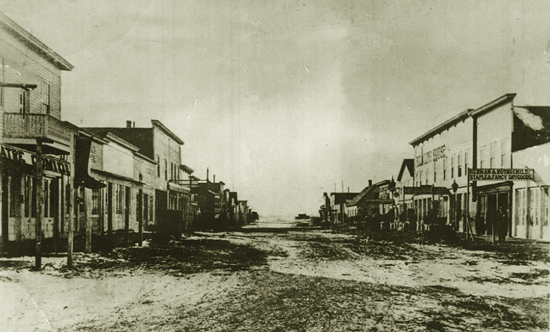
16th Street, Cheyenne, 1869, photo by A. J. Russell
The long two-story building on the right-hand side of the street is the Rollins House hotel owned by
John Qunicy Adams Rollins (1817-1890). In Colorado in 1873, Rollins constructed the first wagon road
into Middle Park and was President of the Rollins Gold & Silver Mining Company. He was
the founder of Rollinsville, Colorado. Possibly as a result of his observations of
Cheyenne in its formative years, Rollins forbade saloons, gambling houses, and dance halls in
Rollinsville.
The two-story building across the street on the left-hand side of the street is the
Ford and Durkee hotel owned in part by Barney Ford who later constructed in Inter-Ocean Hotel on the corner
of the corner of 16th and Hill (now Capitol Ave) and the Inter-Ocean Hotel in Denver. The sign adjacent to the two-story building at the
right-hand side of photo advertises Isacc Herman's Staples & Fancy Dry Goods store. On the bottom floor of the
hotel is the Pikes Peak Express stage office. Adjacent to the Ford and Durkee hotel is the Headquarters Saloon. The Ford and Durkee
hotel burned in 1870.
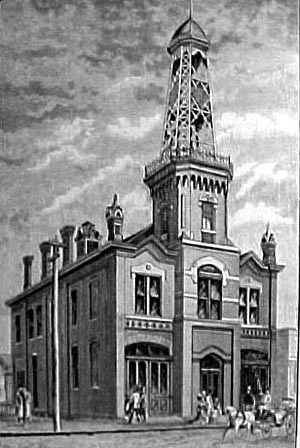 Pioneer Fire Company, 1888 Pioneer Fire Company, 1888
There is, of course, one difficulty of a tent and wooden city -- fire. The city had scarcely been
settled when in October 1867, a prairie fire threatened the city. The residents managed to save the
city by battling the fire with wet burlap bags. The editor of the Evening Leader complained,
"A ruinous fire is the danger we, in this town, of tinder like tenements live under at all times."
George Raymond was appointed as fire warden and all chimneys, flues and stovepipes were subject to
inspection. In 1868, another fire burned down half a city block causing more than $50,000.00 in losses.
Individual fires continued unabated. The Evening Leader suspected arson, an
act in some areas referred to as "selling it to the Yankees." If arson, however, was
the cause of the numerous fires, it would have been a poor motive. Most structures had no
insurance. The volunteer Pioneer Hook and Ladder Company was formed. The mayor and local saloonist, Luke
Murrin, pledged to the new fire company shirts, belts and caps. The fires had, however, to be
fought with bucket brigades. Shortly thereafter with the assistance of the Union Pacific Railroad the
Thomas C. Durant Engine Company was formed and shortly thereafter a magnificent new $10,000.00 steam fire engine was
ordered from the east.The engine was the first steam fire engine west of the Missouri River. Omaha did not order
a steam fire engine until the following year and it was only a "second class" engine. The Omaha engine replaced an
earlier $500.00 hand pumper.
The assistance of the Union Pacific was not altogether beneficent. Indeed,
the railroad sued the city and levied on its fire bell until the city raised the $68.00 to satisfy the
judgment. In Omaha,
another fire company was organized also named after Dr. Durant. The motive was protection of the
Union Pacific shops.
The new steam fire engine provided a constant drain on the city's beleagured coffers and thrice
the newly formed Wyoming Territorial Legislature had to authorize special taxes to pay for the
mortgage on the engine and repeated repairs. The difficulty with a steam fire engine is getting
up the necessary steam pressure to operate its pump. In theory, lighter is kept in the fire box so that
the fire can be lit and pressure built up while the horses are hitched and the engine driven to the
fire. In many instances, however, by the time the pressure was attained, the fire was over. In January 1870,
another fire burned down two city blocks.
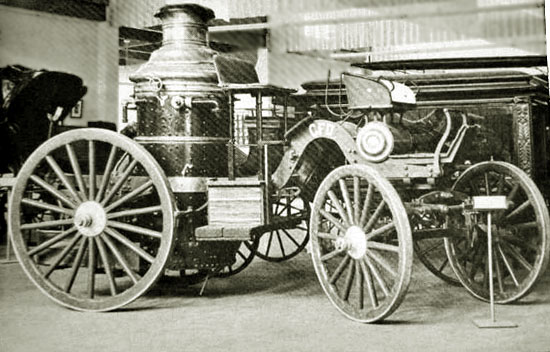
Cheyenne's Steam Pumper
In September 1870 a second fire burned down half a block
on Eddy Street causing, according to the New York Times, $150,000 to $200,000 in damages. In July 1874, a fire burned McDaniel's Theatre
on Eddy Street and the adjacent butcher shop. Additional volunteer fire companies were formed. In 1877 the Alert Hose Company was
organized and two years later the J. T. Clark Hose Company. By the 1880's the various
volunteer companies were well equipped with the one steam engine, chemical extinquishers, 1 hand pumper, 2 hook and
ladder trucks, 7 hose carriages, 2,500 feet of rubber hose, 1,000 feet of cotton hose, 4 cisterns and
10 street boxes.
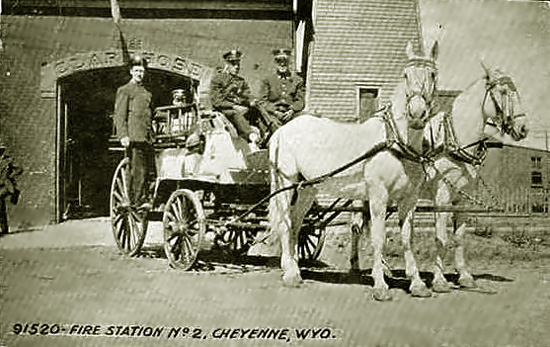
Hose truck in front of Fire Station No. 2., the former J. T. Clerk Hose Company.
Shortly after the turn of the century, fire services in Cheyenne were consolidated into one department and
equipment modernized.
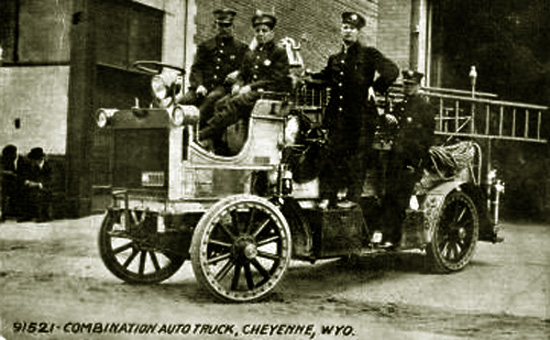
Combination Auto-Truck, approx. 1910.
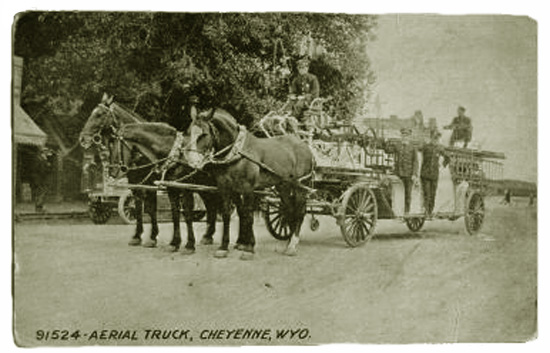
Aerial Ladder Fire Truck, approx. 1910.
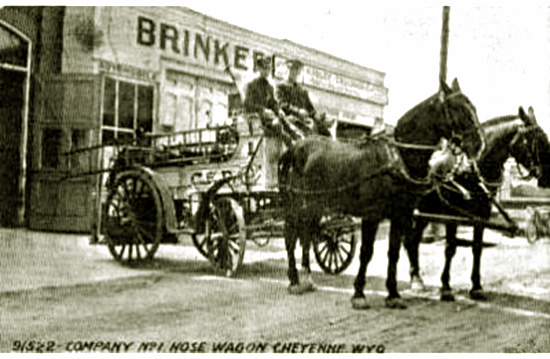
Hose Truck, approx. 1910.
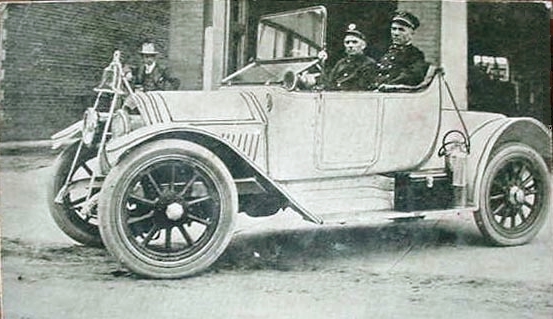
Fire chief's car, approx. 1910.
Next page, Cheyenne Photos continued, early impressions of Cheyenne..
|